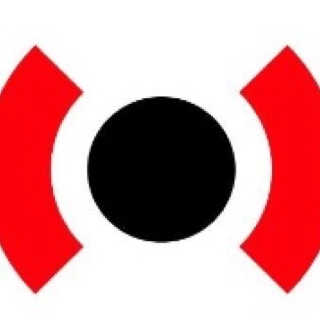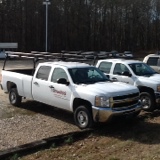Information
-
Document No.
-
Audit Title
-
Client / Site
-
Conducted on
-
Prepared by
-
Location
-
Personnel
1. Working at Heights
-
1.1. Is there a fall risks of 6 feet or more? (including voids, pits, and trenches)
-
1.2. Is there edge protection?
-
1.3. Is the edge protection unsafe or incomplete?
2. Equipment
-
2.1. Is there any unsafe or damaged equipment? (missing or damaged guards, etc.)
-
2.2. Is the right or correct equipment on hand?
-
2.3. All attachments used with equipment are approved and correct?
-
2.4. Are all operators licensed or designated (properly trained and documented)?
-
2.5. Are all required inspection regimes followed?
3. Scaffolds
-
3.1. Are qualified persons erecting scaffold above 12 feet?
-
3.2. Are all scaffold inspected and tagged before use?
-
3.3. Is there procedures in affect to insure incompatible scaffold components are not used together?
-
3.5. Is the Safe Work Load (SWL) for the scaffold exceeded? (tools, stored materials, number of persons)
4. Lifting Equipment
-
4.1. Is any of the equipment unsafe, damaged or unlabeled?
-
4.2. Are loads lifted over persons or close proximity to obstacles incl. overhead power lines?
-
4.3. Is the maintenance, testing or inspection documentation available?
-
4.4. Is Safe Working Load (SWL) information displayed?
-
4.5. Is daily inspection worksheet available and current for equipment requiring it?
-
4.6. Are unsafe or damaged lifting equipment, including ropes, slings, chains, hooks disposed of as soon as they are discovered?
-
4.7. Are all operators licensed, trained and documented?
5. Harness and Equipment
-
5.1. Is there any unsafe or damaged fall protection equipment?
-
5.2. Is there any incompatible hooks/equipment being used?
-
5.3. Is all fall protection properly marked, labeled and does it meet ANSI Standards?
-
5.4. Are only safe anchor points being used?
-
5.5. Are monthly inspection for equipment being completed and documented?
6. Ladders
-
6.1. Any unsafe or damaged ladders on the job site?
-
6.2. Is the positioning of ladders safe?
-
6.3. Is the ladder properly secured or held when in use?
-
6.4. Is the ladder unsuitable for job? (e.g. metal ladder used for electrical work)
7. Hazardous Manual Tasks
-
7.1. After the identification of a hazardous manual task, is there a crew assessment and discussion of how to do it safely?
-
7.2. Is the hazardous manual task identified on the PTP (Pre task plan) ?
-
7.3. Are there adequate risk controls? (examples: job rotation, lighter loads, trolleys, lifting equipment, etc)
-
7.4. Has the crew received training in risk controls and safe lifting/ team lifting techniques?
8. Hazardous Communication
-
8.1. Are flammables and combustibles placed in a safe storage location? (e.g. flammables near ignition sources, spills could enter stormwater drains, etc)
-
8.2. Are incompatible chemicals stored near each other?
-
8.3. Is there adequate spill containment materials and equipment readily available?
-
8.4. Are Material Safety Data Sheets accessible on site?
-
8.5. Are there established emergency procedures for injury/spills/fire etc?
-
8.6. Are there excessive quantities stored on site or in vehicles?
-
8.7. Is there sufficient ventilation around the work and storage area for the material being used?
-
8.8. Is the correct PPE being used for the chemicals in use?
-
8.9. Are all storage containers correctly labeled?
9. Emergency Response
-
9.1. Is there an emergency plans for site?
-
9.2. Are the emergency procedures displayed at site?
-
9.3. Is there adequate training and rehearsal of emergency plans?
-
9.4. Is there adequate first aid kits aid equipment for site? (To include AED's)
-
9.5. Are there sufficient and good access to formally trained First Aiders for all shifts?
-
9.6. Is there suitable or adequate communication equipment?
10. Personal Protective Equipment (PPE)
-
10.1. Is there adequate PPE (including sun protection) for the job task(s)?
-
10.2. Is there an established system to issue, inspect, replace and monitor PPE?
-
10.3. Is there training in safe use, clean-up and inspection of PPE?
11. Work Environment
-
11.1. Are there adequate amenities? (toilets, wash areas, lunch rooms, etc)
-
11.2. Is there sufficient lighting for the work to be accomplished?
-
11.3. Adequate housekeeping?
-
11.4. Adequate noise/ vibration control?
12. Electrical Hazards
-
12.1. Safe electrical cords? (None damaged, out of test date or untested)
-
12.2. No overloading outlets?
-
12.3. Are cords placed on working surfaces or on metal structures?
-
12.4. At the job site can any electrical cords be damaged from contact with moving machinery parts?
-
12.5. Are there Lock-out/Tag-out (LOTO) procedures for electrical equipment?
13. Administrative Procedures
-
13.1. Adequate Site Safety Plan?
-
13.2. Crew obtain required permits (PTP, Hot Works, Confined Space etc)
-
13.3 Orientation for workers, contractors, visitors?
-
13.4. Adequate, supervisory arrangements?
-
13.5. Adequate training, licenses, skills, experience?
-
13.6. Adequate Pre-Task Plan (PTP) or Job Safety Analysis (JSA) for high- risk work?
Corrective Actions
-
Comments:














